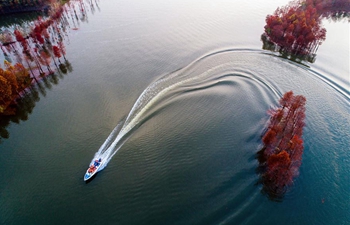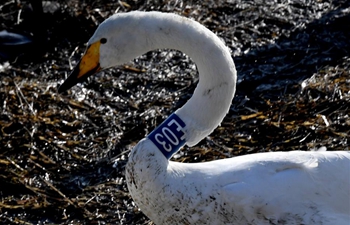NANJING, Nov. 28 (Xinhua) -- Chinese researchers have discovered through studying paleontology of strata that the bulk of today's southern China was beneath the sea between 410 million and 350 million years ago.
A research team from Nanjing Institute of Geology and Palaeontology with the Chinese Academy of Sciences spent three years on the study. Based on the latest paleontological evidence, they concluded that most parts of the South China Plate was under the sea between 410 million and 350 million years ago.
The study shows that the South China Plate covers today's Yunnan, Guizhou, Sichuan, Hunan, Hubei, Zhejiang, Jiangxi, Fujian, Guangdong provinces, Chongqing Municipality, Guangxi Zhuang Autonomous Region and the southern part of Jiangsu Province, northern Vietnam, as well as the Yellow Sea and the East China Sea.
The researchers discovered a fossil, in east China's Jiangxi Province, of a plant that lived in nearshore waters dating back 410 million years. This means the area was submerged by shallow seawater at that time.
They continued to study plant fossils unearthed from more than 50 places on the South China Plate and found that the coastline on the plate gradually moved eastwards from 410 million to 350 million years ago.
About 410 million years ago, the coastline was in today's central part of Guangxi, southern Hunan and northern Vietnam. It moved eastwards to the present-day eastern Jiangsu and Jiangxi, central Guangdong and Hong Kong around 350 million years ago, by which time the bulk of the South China Plate had been engulfed by the sea.
The findings were published early November in the journal Palaeogeography, Palaeoclimatology, Palaeoecology.

















